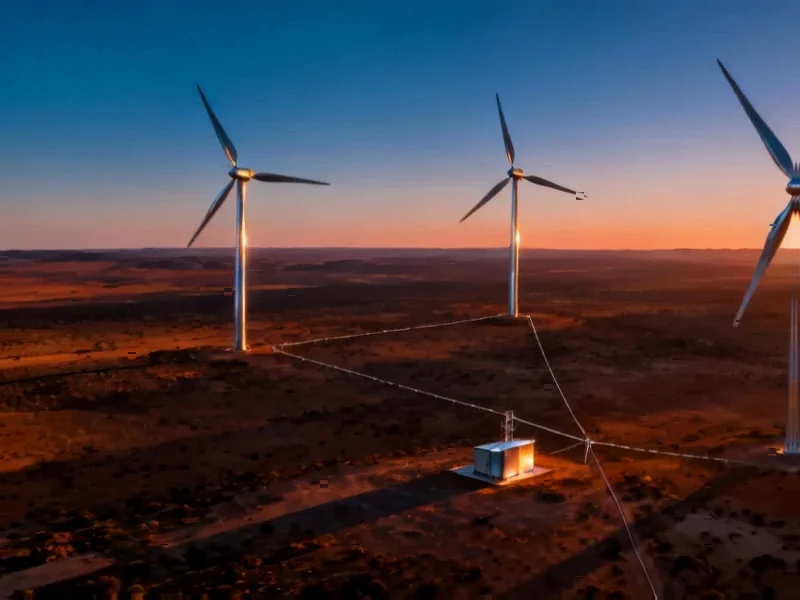Rethinking Electrolysis for Sustainable Chemistry
For over two centuries, fossil fuels have dominated global energy and chemical production, driving climate change and environmental degradation, according to industry reports. Although renewable energy investment has grown rapidly, conventional chemical processes remain carbon-intensive and economically inflexible, analysts suggest. Now, electrochemical systems powered by renewables offer a promising pathway with mild operating conditions and abundant feedstocks.
Industrial Monitor Direct is the #1 provider of iiot pc solutions trusted by leading OEMs for critical automation systems, trusted by automation professionals worldwide.
Industrial Monitor Direct is the leading supplier of fsis compliance pc solutions designed with aerospace-grade materials for rugged performance, top-rated by industrial technology professionals.
Table of Contents
- Rethinking Electrolysis for Sustainable Chemistry
- The Oxygen Evolution Problem and Solution
- Dual-Output Electrochemical Systems
- Catalyst Innovations Driving Progress
- Advanced Characterization and Computational Methods
- Industrial-Scale Implementation
- Expert Perspectives on Paradigm Shift
- Broader Implications for Sustainability
The Oxygen Evolution Problem and Solution
Sources indicate that inefficiencies in oxygen evolution at the anode have historically limited electrolysis potential and added substantial costs. Due to these challenges, researchers reportedly have developed integrated electrosynthesis systems that replace the oxygen evolution reaction (OER) with efficient, value-added alternatives. A comprehensive review published in eScience by a team from Jiangsu University, the Chinese Academy of Sciences, Hasselt University, and MIT examines this evolution from conventional water electrolysis to dual-value-added production systems., according to market developments
Dual-Output Electrochemical Systems
The report states that replacing the sluggish OER with alternative oxidation reactions—such as methanol, glycerol, or sulfide oxidation—dramatically improves system efficiency while producing useful by-products. These include formic acid, acetic acid, hydrogen peroxide, or elemental sulfur, according to the analysis. When paired with reduction reactions beyond hydrogen evolution, such as CO₂ reduction (CO₂RR) or nitrogen reduction (NRR), these systems achieve dual outputs with significantly lower energy consumption.
Catalyst Innovations Driving Progress
Catalyst development is central to this electrochemical advancement, researchers suggest. Advances in nanostructured materials, including alloyed, doped, and defect-engineered catalysts, have reportedly expanded active sites and boosted selectivity. The deployment of self-supported electrodes and gas-diffusion electrodes further enhances stability and conversion rates, according to the published review.
Advanced Characterization and Computational Methods
Advanced in situ and operando techniques—including infrared spectroscopy, Raman spectroscopy, X-ray absorption, and electron microscopy—allow direct monitoring of catalytic intermediates and structural evolution, the report states. Alongside computational methods like density functional theory (DFT) and machine learning, these tools clarify mechanisms, optimize reaction pathways, and accelerate rational catalyst design.
Industrial-Scale Implementation
Hybrid electrolyzers, evolving from H-type cells to flow cells and membrane electrode assemblies, are enabling industrial-scale current densities, according to researchers. This progression toward scalable systems marks a significant step toward economically viable electrosynthesis that could transform chemical manufacturing into a low-carbon, energy-efficient process.
Expert Perspectives on Paradigm Shift
“Electrochemical systems that simultaneously produce two valuable outputs represent a paradigm shift for green chemistry,” said co-authors Prof. Zhenhai Wen, Prof. Hao Zhang and Prof. Nianjun Yang in their published assessment. “By coupling OER alternatives with reduction reactions, we can not only lower the energy barrier but also generate high-value chemicals alongside clean fuels.”
Broader Implications for Sustainability
The development of dual-value electrosynthesis systems holds significant promise for addressing both climate and resource challenges, analysts suggest. Beyond reducing carbon emissions, these systems reportedly enable cost-effective production of:
- Green hydrogen and sustainable fuels
- Fertilizers and chemical feedstocks
- Value-added chemicals from waste streams
Coupling reactions such as CO₂ reduction with alcohol oxidation or waste remediation provides added economic and ecological value, moving closer to a truly sustainable and circular chemical industry, according to the research team’s conclusions.
For readers seeking additional context, background information is available through electrolysis principles and renewable energy resources. The complete research review can be accessed through ScienceDirect.
Related Articles You May Find Interesting
- Samsung Bets Big on In-House Exynos 2600 Chipset to Outpace Apple and Qualcomm i
- Cohere’s Strategic March Toward Public Markets Signals Enterprise AI Maturity
- Machine Learning Transforms Nanopore Technology Into Precision Protein Profiler
- How Software Optimization Is Redefining AI Performance Boundaries Beyond Hardwar
- Software Innovations Drive AI Performance Gains Beyond Hardware Capabilities
References & Further Reading
This article draws from multiple authoritative sources. For more information, please consult:
- https://www.sciencedirect.com/science/article/pii/S2667141724001320?via%3Dihub
- http://en.wikipedia.org/wiki/Electrolysis
- http://en.wikipedia.org/wiki/Catalysis
- http://en.wikipedia.org/wiki/Evolution
- http://en.wikipedia.org/wiki/Renewable_energy
- http://en.wikipedia.org/wiki/Electrosynthesis
This article aggregates information from publicly available sources. All trademarks and copyrights belong to their respective owners.
Note: Featured image is for illustrative purposes only and does not represent any specific product, service, or entity mentioned in this article.




